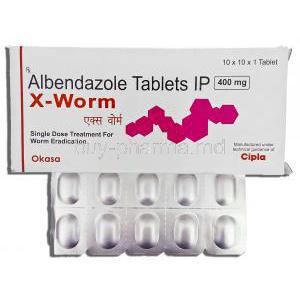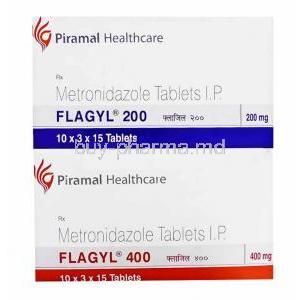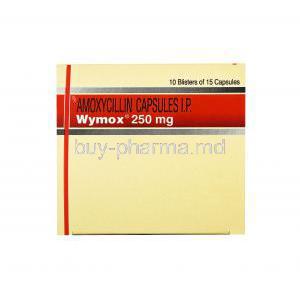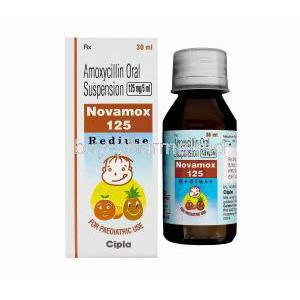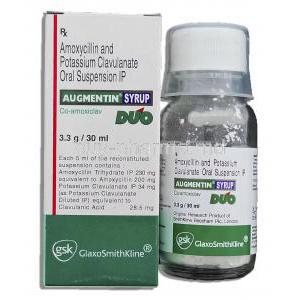I. Introduction to Pyrantel Pamoate Oral Suspension
Overview of Pyrantel Pamoate
Pyrantel Pamoate is a broad-spectrum anthelmintic agent designed to target intestinal nematodes. It operates with precision against parasitic infections, delivering effective results through a well-established safety profile. Typically available in oral suspension, it is favored for its ease of administration, especially in pediatric populations.
Therapeutic Class and Mechanism of Action
Belonging to the tetrahydropyrimidine class, Pyrantel Pamoate exerts a depolarizing neuromuscular blocking action. It paralyzes the helminths, detaching them from intestinal walls, enabling their expulsion through natural peristalsis. This action is both swift and targeted.
Regulatory Status and Availability
Pyrantel Pamoate is classified as an over-the-counter (OTC) medication in many countries for certain indications. It is approved by regulatory authorities such as the FDA and WHO for use in public health deworming programs. Readily available in pharmacies and healthcare facilities globally.
Indications for Oral Suspension Formulation
The oral suspension is indicated primarily for pediatric use and individuals who have difficulty swallowing tablets. It ensures:
- Accurate weight-based dosing
- Improved compliance
- Palatable delivery for young children
II. Composition and Formulation Details
Active Ingredient: Pyrantel Pamoate Concentration per mL
Each mL of the oral suspension typically contains 50 mg of Pyrantel Pamoate, although variations exist depending on the brand and country-specific formulations.
Inactive Ingredients and Excipients
The formulation may include:
- Sorbitol or sucrose (as sweeteners)
- Xanthan gum or cellulose derivatives (as thickeners)
- Flavoring agents (to enhance palatability)
- Preservatives such as sodium benzoate
Physical Characteristics (Color, Taste, Consistency)
The suspension is typically a yellow to orange liquid with a fruity or sweet taste. Its viscosity is moderate, allowing ease of pouring and precise dosage.
III. Mechanism of Action: How Pyrantel Pamoate Works
Neuromuscular Blockade of Parasitic Worms
Pyrantel acts directly on the nervous system of susceptible helminths, inducing spastic paralysis through acetylcholine receptor agonism. The worms lose motility and are dislodged from the intestinal mucosa.
Selectivity for Helminths vs. Human Tissues
Its selectivity lies in the drug's inability to penetrate the human gastrointestinal lining, thus minimizing systemic absorption. This results in minimal toxicity and high therapeutic margins.
Onset and Duration of Action
The effect typically begins within hours post-administration, with elimination of worms observed within 24–48 hours. The duration of action is sufficient to remove intestinal infestations in a single dose for most infections.
IV. Approved Medical Uses of Pyrantel Pamoate Oral Suspension
- Pinworm (Enterobius vermicularis): Highly effective with a single-dose regimen. Most commonly prescribed use.
- Roundworm (Ascaris lumbricoides): Broad-spectrum efficacy against this large intestinal parasite.
- Hookworm (Ancylostoma duodenale, Necator americanus): Used in endemic regions as part of community deworming protocols.
- Whipworm (Trichuris trichiura): Sometimes used in combination with other agents to treat mixed infections involving whipworm.
V. Off-Label Uses of Pyrantel Pamoate Oral Suspension
- Management of gastrointestinal helminthiasis in veterinary medicine (especially in canines and felines)
- Adjunct therapy in polyparasitic infections
- Prophylactic use during mass deworming campaigns in resource-limited settings
- Empiric treatment in travelers returning from high-endemicity regions
VI. Dosage and Administration Guidelines
Standard Dosing for Children and Adults by Weight
The standard dosage is 11 mg/kg (maximum 1 g), administered as a single oral dose. Dose adjustments are based on patient weight.
Single-Dose vs. Repeated Dose Regimens
- Single dose is adequate for most pinworm and roundworm infections. - Repeated dosing may be required after 2–3 weeks to prevent reinfection.
Instructions for Accurate Measurement and Administration
- Shake the bottle well before use. - Use calibrated dosing tools, not household spoons. - Administer with or without food.
What to Do in Case of Missed Dose
If a dose is missed, administer as soon as remembered unless it is near the time for the next dose. Do not double the dose.
VII. Pyrantel Pamoate Oral Suspension Dosage by Population
Dosage for Infants and Young Children
Safe for use in children above 6 months of age. Pediatric dosing must be precisely calculated per body weight.
Dosage Adjustments for Elderly Patients
No routine adjustments required. However, monitoring is advised in the presence of hepatic impairment or polypharmacy.
Dosing Considerations in Underweight or Immunocompromised Patients
Initiate at the lower end of the dosing spectrum. Monitor response and adverse effects vigilantly.
VIII. Important Precautions Before and During Use
- Confirm diagnosis via stool microscopy or clinical history
- Educate household contacts on hygiene and sanitation
- Reinforce handwashing, laundering of clothes and bed linens
- Reassess for reinfection or treatment failure after 2–3 weeks
IX. Warnings and Contraindications
Contraindications: Known Hypersensitivity to Pyrantel or Excipients
Do not administer in cases of documented allergy or intolerance to the drug or formulation components.
Neurological Conditions or Hepatic Dysfunction
Use with caution in patients with preexisting epilepsy, neurodegenerative disorders, or liver impairment.
Avoidance in Myasthenia Gravis Patients
Due to neuromuscular blockade activity, Pyrantel is contraindicated in myasthenia gravis.
X. Use in Special Populations
Administration to Children
Well-tolerated with appropriate dosing. Liquid formulation improves adherence. Taste masking is incorporated in most commercial brands.
Administration to Pregnant Women
Category C: Animal reproduction studies have shown adverse effects; human data limited. Use only if clearly needed.
Use in Second and Third Trimesters
May be considered under medical supervision when benefits outweigh risks.
Administration to Nursing Mothers
Excretion in breast milk is minimal. Breastfeeding is generally considered safe following single-dose administration.
Administration to the Elderly
No specific contraindications. Monitor for hepatic burden or polypharmacy-induced interactions.
XI. Side Effects of Pyrantel Pamoate Oral Suspension
Common Side Effects
- Nausea, vomiting, and gastrointestinal distress
- Transient abdominal cramps
- Dizziness or mild headache
- Fatigue, especially post-treatment
Less Common and Serious Adverse Effects
- Rash or urticaria
- Transient elevations in hepatic enzymes
- Rare cases of hypersensitivity or anaphylaxis
XII. Drug Interactions and Compatibility
Interaction with Piperazine and Other Anthelmintics
Avoid concurrent use with piperazine as they may antagonize each other’s neuromuscular effects.
Impact on Diagnostic Tests and Liver Enzyme Levels
May cause temporary alterations in liver function tests. Inform laboratory staff if testing occurs post-treatment.
Food or Supplement Interactions
Food does not significantly alter absorption. High-fat meals may enhance tolerability.
XIII. Overdose and Emergency Management
Signs and Symptoms of Overdose
Manifestations include nausea, muscle tremors, confusion, and exaggerated gastrointestinal symptoms.
Recommended Immediate Interventions
- Supportive care is primary. - Gastric lavage may be considered if ingestion was recent. - Activated charcoal administration may reduce systemic effects.
Long-Term Monitoring After Overdose
Liver enzymes and neurological status should be monitored for at least 48 hours. Extended care may be warranted for severe cases.
XIV. Storage and Stability of Oral Suspension
Recommended Storage Temperature and Conditions
Pyrantel Pamoate Oral Suspension should be stored at controlled room temperature, ideally between 20°C to 25°C (68°F to 77°F). Avoid exposure to excessive heat, direct sunlight, and freezing temperatures, as these can compromise the chemical integrity of the formulation. Store the bottle in a tightly closed container, in a dry environment away from humidity.
Shelf-Life After Opening
Once opened, the suspension generally remains stable for up to 28 days, unless specified otherwise by the manufacturer. Ensure the cap is securely fastened after each use to prevent microbial contamination and evaporation.
Signs of Degradation or Contamination
Do not use the suspension if any of the following are observed:
- Change in color or opacity
- Unusual or foul odor
- Clumping, sedimentation, or separation of contents
- Crystallization or visible particulate matter
Discard any suspension that exhibits these alterations or has passed its expiration date.
XV. Handling Precautions and Dispensing Guidelines
Proper Shaking and Measuring Techniques
Shake the bottle vigorously before each use to ensure uniform distribution of the active ingredient. Utilize a calibrated dosing syringe, cup, or spoon provided with the packaging for precise administration. Avoid using kitchen utensils, as they may lead to under- or overdosing.
Instructions for Caregivers and Healthcare Providers
Caregivers should be educated on:
- Correct weight-based dosing procedures
- Monitoring for side effects post-administration
- Maintaining hygiene to reduce recurrence and cross-infection
Healthcare providers must document dosing history and ensure proper instruction on follow-up dosing if indicated.
Safe Disposal of Unused Medication
Unused or expired Pyrantel Pamoate suspension should be discarded according to local pharmaceutical waste disposal regulations. Do not pour contents down the drain or flush into the sewage system. Utilize drug take-back programs when available.
XVI. Careful Administration Considerations
Patients with Liver Impairment or Epilepsy
Caution is advised when administering Pyrantel Pamoate in individuals with compromised hepatic function, as metabolism may be altered. In patients with epilepsy, monitor closely for any neurological side effects, although systemic absorption is minimal.
Concurrent Medication Use
Evaluate the full medication profile of the patient. Potential pharmacodynamic interference may occur with other anthelmintics, such as piperazine. Avoid simultaneous use unless clinically warranted and supervised.
Nutritional Status and Gastrointestinal Health
Malnourished individuals or those with gastrointestinal disorders (e.g., inflammatory bowel disease, malabsorption syndromes) may experience altered pharmacokinetics. Administer cautiously and ensure adequate nutritional support during treatment.
XVII. Summary and Clinical Recommendations
Key Points for Safe and Effective Use
- Confirm diagnosis prior to initiating therapy
- Ensure accurate, weight-based dosing
- Educate patients and caregivers on hygiene to prevent reinfection
- Monitor for potential side effects, especially in vulnerable populations
When to Consult a Healthcare Provider
Seek medical advice in the following scenarios:
- Persistent or worsening symptoms after treatment
- Signs of allergic reaction or severe gastrointestinal distress
- Concerns regarding dosing in infants, elderly, or pregnant individuals
Role in Public Health Deworming Initiatives
Pyrantel Pamoate plays a pivotal role in national and global deworming programs targeting soil-transmitted helminths. Its cost-effectiveness, broad-spectrum activity, and minimal side-effect profile make it an indispensable tool in:
- School-based deworming campaigns
- Community outreach in endemic zones
- Integrated neglected tropical disease control strategies
Continued use supports global efforts in reducing parasitic disease burden and improving quality of life in vulnerable populations.






